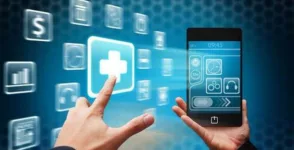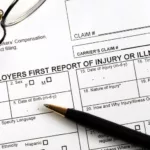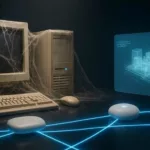It seems like just a few years ago that technology was just being introduced into the healthcare field by means of better imaging equipment and better record keeping. However, technology in the healthcare field has grown so much, that it is not changing the way you get your care from your doctor.
The Doctor Is Back in Patient’s Homes
Many years ago, doctors would make house calls. They still had their medical office where they could examine patients who came to see them, but house calls were fairly common. After all, not everyone had access to transportation and it was better if they were not moved from their bed. That eventually became a thing of the past but now, thanks to technology, the doctors are back in patient’s homes…in a sense.
Apps on smartphones and computer programs allow you to get in touch with a doctor right from the comfort of your own home. Video chats, for example, could be used to showcase rashes and other physical ailments without visiting the practice. Instead of wasting a lot of time waiting for an appointment, driving there, sitting there, and taking up one of the doctor’s examination rooms for something as simple as a rash, he or she can diagnose the problem while you remain at home. If you are in need of a prescription, your doctor will be able to send an electronic prescription straight to the computers of your local pharmacy.
You Can Do a Lot Through the Doctor’s Website
Many doctor offices now have their own websites that will give you access to a lot of information and assistance that you need. Through their healthcare marketing, they are finding out what works and what doesn’t, in order to increase patient engagement and acquisition. A lot of patients are now able to log on to the website with personal login information provided by their doctor’s office and retrieve a copy of their medical records. You may also be able to look at their website to see the results of the blood work you just had done the other day, as well as the results for all the tests that have been done and recorded since the start of the new system. In some cases, patients can email their doctor and get a HIPAA compliant and secure email right on the patient portal of the website. Appointments can be scheduled, referrals can be requested, and refills can be requested all with a few clicks.
Why is this important? Why do they want you to go to their website? While you may still be greeted by a friendly voice when you call the doctor’s office to make an appointment, you free up a lot of their time when you do it online. The more people use the resources that are available to them through the online website, the more time the doctors, nurses, and medical assistants will have to tend to other matters. For example, if the medical assistant is not busy answering calls for requests that could have been made online, he or she could tend to checking in all of the patients that just arrived for their scheduled appointment. If you were one of those people in the waiting room, wouldn’t you appreciate a streamlined process that allowed you to get back to see the doctor as soon as possible?
Patients Can Now Quickly Take Their Own Vitals Digitally from Home
Before, patients had to make an appointment, sit in a waiting room until their name was called, and then finally get their vitals taken. That was a lot to go through and a lot of wasted time if you are currently dealing with increases in heart rate or elevated blood sugar levels. Instead of having to wait through all of that, or guess whether you should head to the local emergency room, you can now check all your own vitals with medical. If you are still unsure as to whether you should seek prompt emergency care, you can call your doctor’s office or their after hours emergency line to speak with a nurse. You can read off your vitals to him or her and then you will be told whether you are fine or should get yourself to an urgent care or other emergency facilities.
Doctors are Now Educating Patients Online Through Social Media
Doctors are just like everyone else, as in many of them are using social media to get their message out. While you might not find a lot of meme’s on the social media page of your doctor, there is a good chance that you are going to find a wide variety of good information to help you ward off preventable diseases, healthy living tips, and signs of things that may warrant a trip to the doctor. You can learn a lot by reading everything that your doctor or his or her office posts on social media. While your doctor will surely still give advice to his or her patients that are seen for an appointment, there are many others who may not come into the office very often. This method of communication allows the doctor to remind everyone that it is flu season or what to watch out for when it comes to being bit by a tick during the summer.
Doctors and Nurses Can Record and Retrieve Patient Records Without Dealing with File Folders
Hospitals and doctor’s offices are generally very hectic with people going all over the place. Since there could be a few different health care professionals working on your condition, it is important to make sure that your medical records are updated as quickly as possible. Before all of the advancements in technology, nurses had to travel back to the nurse’s station and manually update all of the information before being called out to another room for another patient. Now, thanks to advancements in technology, doctors and nurses are able to carry small computer devices that will allow them to update your medical records in real time – before they even leave the room. This saves them a lot of time and it also allows them to ensure that they are getting the full picture of your medical history, as they do not have to worry about any pages being missing from a folder down the hall. Also, no one will have to worry about reading the records wrong because of a problem understanding the handwriting of someone else.
Greater Transparency Between Hospitals
This has proven to be a vital method in helping cut down on the number of people who use emergency rooms to get their next opioid fix. Before hospitals were tapped into the same systems, an addict could visit one hospital after another, day after day, complaining of back trouble or some other sort of aliment that can be hard to disprove in search of opioid pain medication. Now, when you visit a hospital, they can tell if you have just recently been seen by another local hospital in the network. While one other hospital trip may not give you the label of being an addict, it does give them cause for concern. They might be a little less likely to simply prescribe more pain medication for you, as opioid addiction is sadly still on the rise. Doctors are acting in a proactive manner in order to reduce any part that they may unintentionally play into that. Of course, this is not just so drug-seeking patients are dealt with in the correct manner. If you were at another facility and were prescribed a medication that you forgot the name of the that you were prescribed, the doctors will be able to look it up before prescribing anything else to you. This is vital because certain drugs cannot interact together without putting the patient at risk of medical problems or even death.
As you can see, there have been a great number of technological advancements that made the doctor-patient relationship and getting the best care possible much easier. While it might seem as though the medical field has reached its limits now, we just never know what they could be working on that we will see in a few years time. After all, a lot of the medical technologies that we have now are probably things that people in the past would have never thought possible. When it comes to medical science and technology, there seems to be an unlimited number of possibilities.








